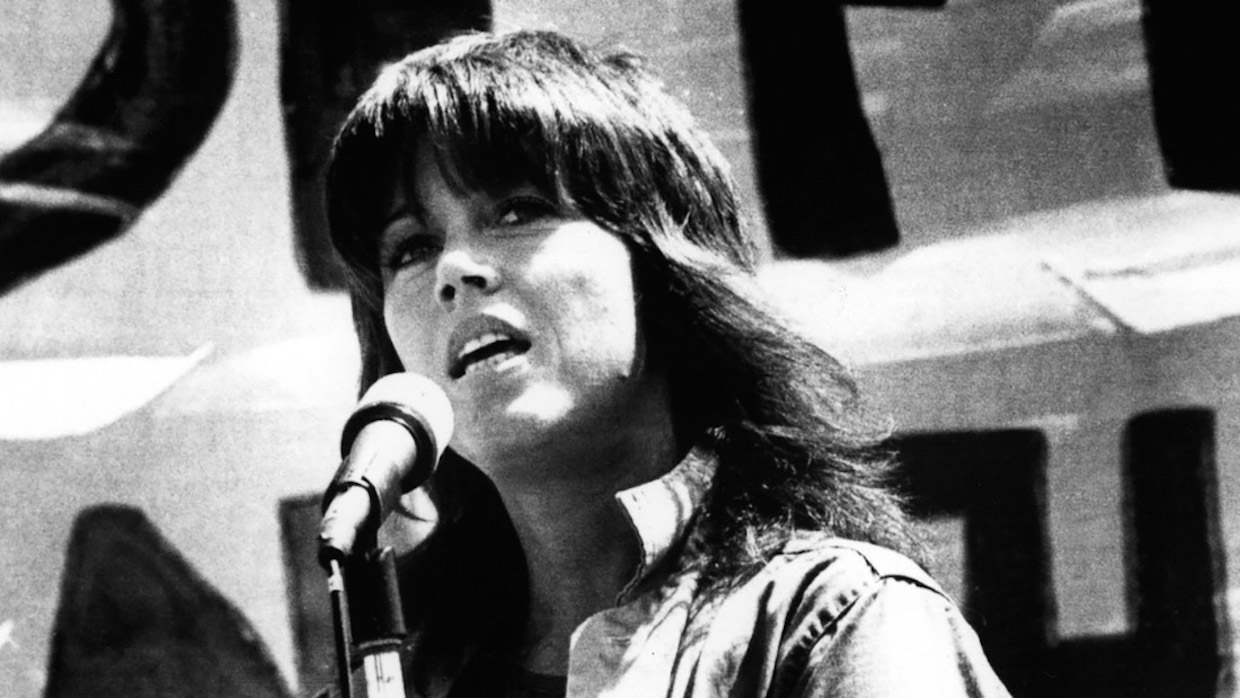 Back to selection
Back to selection
“Jane Usually Knew Exactly Where I Was”: DP Sam Painter on Jane Fonda in Five Acts
 Jane Fonda in Five Acts
Jane Fonda in Five Acts The past four months have seen the premieres of two documentaries shot by Sam Painter and directed by Susan Lacy. The creator of American Masters and the winner of 14 Emmy Awards, Lacy released Spielberg on HBO last October. This month she arrives at Sundance to debut Jane Fonda in Five Acts, her doc on the legendary actor, activist and feminist. Below, Painter discusses how he sought to photograph this “amazingly colorful, political, philanthropic and influential life.”
Filmmaker: How and why did you wind up being the cinematographer of your film? What were the factors and attributes that led to your being hired for this job?
Painter: Susan Lacy the director and I met about five years ago, when she was hired by HBO. She had seen Going Clear which I shot and liked the way it looked. So I guess she knew what kind of look she was going to get from me.
Filmmaker: What were your artistic goals on this film, and how did you realize them? How did you want your cinematography to enhance the film’s storytelling and treatment of its characters?
Painter: Jane Fonda has had an amazingly colorful, political, philanthropic and influential life. How many people can you say that about? I couldn’t wait to hear her stories. One of the main goals for me was to make Jane Fonda feel as comfortable around me and the whole crew. This being a doc and not a narrative, I let the situations play out as if I am not there as much as that is possible.
Filmmaker: Were there any specific influences on your cinematography, whether they be other films, or visual art, of photography, or something else?
Painter: No. I go into every doc fresh. We need to see how it lays itself out to us. What we can film, how to film it and what is the best approach to accomplish that.
Filmmaker: What were the biggest challenges posed by production to those goals?
Painter: None that aren’t the same for every doc. Location scouts are rare for most of the docs I shoot. You don’t always know what you’re getting into until you to meet the people you are filming and see the location. It is a doc so the location dictates to us what and/or how to film it. You modify your shooting around the location and the time that is allowed. Meaning, where is the available light coming from and how to augment it if possible.
Filmmaker: What camera did you shoot on? Why did you choose the camera that you did? What lenses did you use?
Painter: I shot with a Sony F5 which I own and feel comfortable with. I shot with Schnieder Xenon Primes, Nikon Primes as well as Canon zooms – 30-300 and 17-120.
Filmmaker: Describe your approach to lighting.
Painter: When I am shooting cinema vérité, I am a fly on a wall…as much as I can be. Jane usually knew exactly where I was. So for vérité I would almost always have to use existing light.
Filmmaker: What was the most difficult scene to realize and why? And how did you do it?
Painter: Being a doc I don’t recall anything being difficult accept her schedule vs. mine.
Filmmaker: Finally, describe the finishing of the film. How much of your look was “baked in” versus realized in the DI?
Painter: I shot in Slog and the film was edited in New York. So I did not have a final say in the grading.
TECH BOX:
- Camera: Sony F5
- Lenses: Schnieder Xenons, Canon Cine Zoom lenses and Nikon
- Lighting: HMIs, Kinos, Astra LEDs, Tungsten and available light
- Processing: Digital
- Color Grading: Slog
